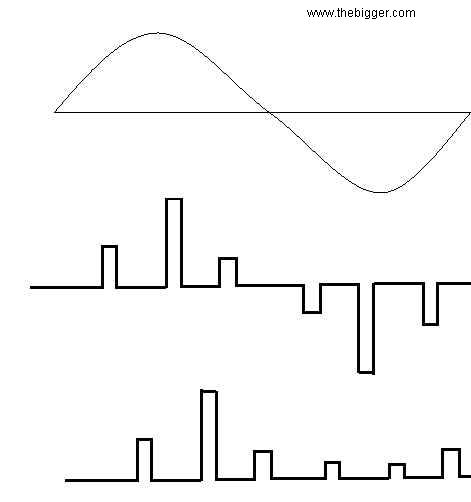In Pam each sample is directly proportional to signal amplitude. Generally it is used for the modulation of the carrier wave

The part (a) of figure represents the modulating signal.
In part (b) of the figure, a PAM having double polarity is used.
Part(c) shows, a PAM having single polarity.
Pulse Time Modulation (PTM): In this constant amplitude pulses are show constant amplitudes. The advantage of PTM over PAM is that the frequency modulation has higher amplitude modulation. A theorem related to this is basically known as ‘Sampling Theorem’ which is discussed below.
According to this theorem, signal having minimum distortion can be reconstructed if the rate of sampling in any of the pulse modulating system will exceeds twice the maximum value of the signal frequency, e.g. On the channels of the standard telephones the range of audio frequency is 300 to 3400htz. In general, 8000 samples per second is the worldwide standard for this system.
Pulse code modulation (PCM): Similarly, the sampling system is also used by PCM. In this process a PCM generator is used. The main function of generator is to generate a number or digits in series. The amplitude of each sample is represented by each digit present at that particular point or instant.
There are lots of standard levels in which the division of total amplitude range is categorized. The levels formed will be the power of 2. The maximum number of levels in this system can be 128.
Pulse Delta Modulation: In this type of system only single bit is transferred to each sample. This is done basically to check whether coming signal is having higher or smaller value than the existing level. This system use simple techniques of coding and decoding.
